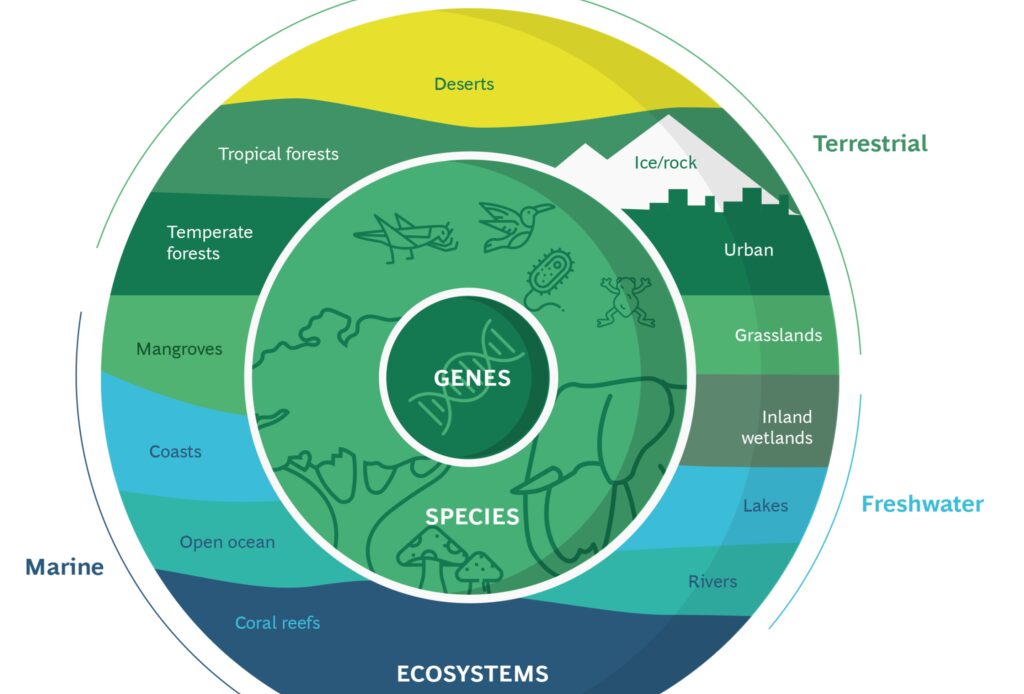There’s little point in talking about sustainability if we don’t talk about life on Earth. All living things like plants, animals, fungi, and bacteria form part of what we call “biodiversity” – or, the variety of the different kinds of life (species) you’ll find in a given area. All of these species work together to maintain their ecosystems and survive within them. They create the delicate balance that is needed for life to thrive. Whole ecosystems can collapse if this balance is not maintained.
However, as humans consume more resources, we risk upsetting that delicate balance. Whether it’s pollution, climate change, or population growth, human activities undeniably have an adverse effect on biodiversity. That’s why we, both as individuals and as businesses, have a responsibility to look at our actions and find ways to minimize the negative impact we have.
A refresher course on biodiversity
Reminder of key terms:
Biomes: large areas characterized by their vegetation, soil, wildlife, and climate. The 5 main types of biomes include forest, tundra, desert, aquatic, and grassland.
Biosphere: the entirety of the parts of the Earth where life exists. This includes everything from the deepest trenches in the ocean to the highest mountain peaks.
Ecosystem: a geographic area where plants, animals, other organisms, the weather, adn even the landscape, work together to form a “bubble of life”.
Here’s a short refresher on biodiversity for those who don’t remember much from their biology classes in school.
- Biodiversity is a bewilderingly broad concept, covering literally all life on Earth
- It is the most complex and vital feature of our planet, as it is this myriad of relationships between organisms that make life possible
- There are several levels of biodiversity, including:
- Genes
- Individual species
- Communities of living things
- Entire ecosystems
- Healthy ecosystems are comprised of this range of animals, plants, microorganisms, and more. It’s these ecosystems that provide the air we breathe, the food we eat, and the medicine we rely on. For example, without plants, we wouldn’t have any oxygen to breathe. Without bees to pollinate flowers, we wouldn’t have any fruit.
The most diverse ecosystems
When looking at biomes and ecosystems, it’s…
Click Here to Read the Full Original Article at Business Travel Tips & News | TravelPerk Blog…
